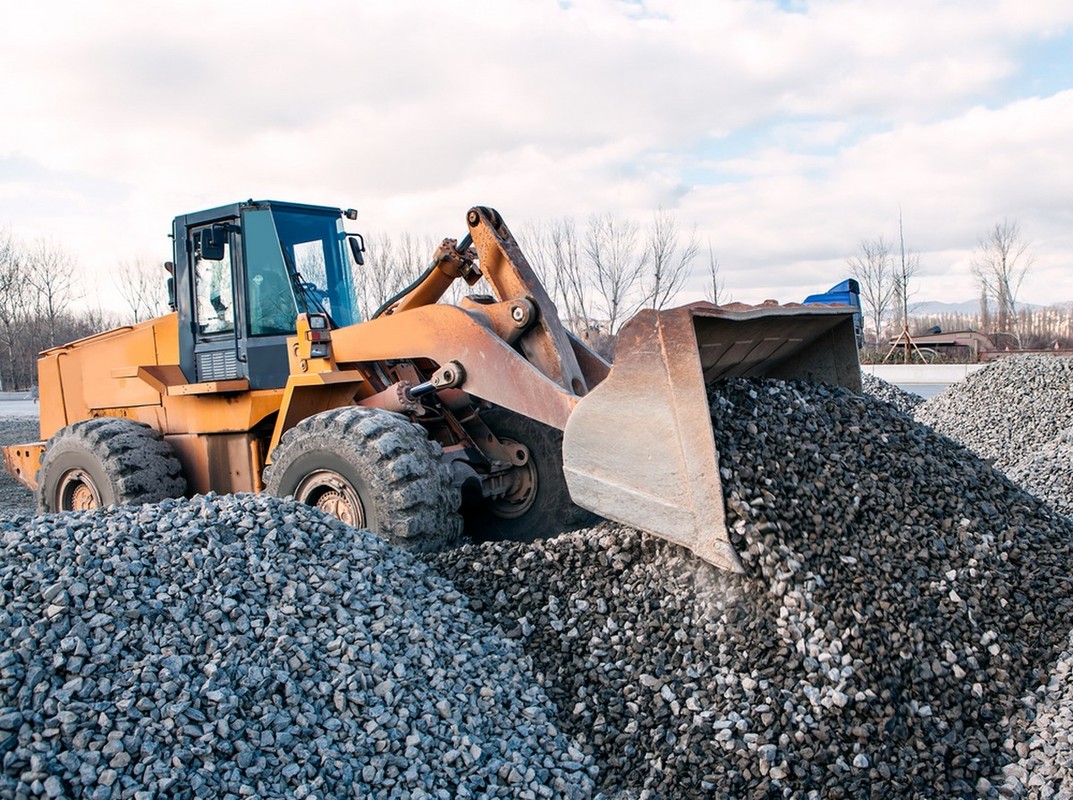8. Natural resources are the basis of the economy
Contents
8.1 Natural resources are the basis of the economy
 Right now, as you are reading this text, you are using some kind of a computer. Have you ever thought about what kinds of things are needed to craft such a device? The list of things required to do so is too long to include here, but let us mention some examples.
Right now, as you are reading this text, you are using some kind of a computer. Have you ever thought about what kinds of things are needed to craft such a device? The list of things required to do so is too long to include here, but let us mention some examples.
The frames of computers, tablets, and smartphones are often made of plastic, which is produced from crude oil. The screens of these devices contain elements such as aluminium, silicon, as well as smaller amounts of indium and tin. The most important element used in batteries is lithium. All these elements are gathered from minerals that are contained in rock. Minerals are mined all over the world. Elements are extracted from minerals by using large amounts of water.
In addition, the mining, refining, exctraction and transportation of these elements requires energy. This energy is most often obtained from oil, coal or natural gas. All the things listed above are examples of natural resources. Our whole economic system and lifestyle is based on them.
8.2 The classification of natural resources
Natural resources can be either food, materials or sources of energy. Trees, water and chalk are all examples of natural resources than can be used as raw materials in themselves, or to produce other materials. They are all needed to produced paper, for example. Some natural resources that are used as materials in themselves can also be used as sources of energy. Such natural resources include trees, water, coal and crude oil. Uranium, natural gas and wind are examples of natural resources that can only be used as sources of energy.
Natural resources that are used either as materials or energy sources can be divided into renewable and non-renewable resources. Renewable resources include things like biomass, wind, water and solar radiation. They replenish after they are used or consumed. In contrast, non-renewable resources include things such as metals, minerals, fossil fuels and uranium. They do not replenish after being used, which means that their supplies are limited.
The classification of natural resources.
8.3 Rock materials for various uses
 Rock materials are mined from the ground. They are often usable as they are, but some rock materials can also be refined.
Rock materials are mined from the ground. They are often usable as they are, but some rock materials can also be refined.
Sand, gravel and rubble are needed in great quantities. They are used to make foundations for railways and buildings. Many types of rock, such as granite and marble, are used in buildings.
When smoothed and cut in the right way, rock materials can be used to create impressive fireplaces, practical objects and tiling.
Concrete is the most widely used building material in the world. It is primarily made of cement, which is usually made by burning limestone. When mixed with sand, gravel and other materials, cement becomes fluid concrete that hardens over time.
Different gems, precious stones, and diamonds are also economically important extraction-industry products. Diamonds are by far the most valuable of the three, as they are the hardest material on Earth. Diamonds are also popular in jewellery. Although individual diamonds are small and rare, over 20 tons are mined every year around the world.
8.4 From ore to metal
 When you pick up a stone, there is a high chance that the stone you picked contains metals, such as aluminium and potassium. A regular stone can even contain small amounts of gold or uranium.
When you pick up a stone, there is a high chance that the stone you picked contains metals, such as aluminium and potassium. A regular stone can even contain small amounts of gold or uranium.
However, extracting these metals from small stones is often not cost-effective, as the amount of metal contained in the stone is too small.
If a rock contains enough metal to make its extraction and refining economically feasible, the rock is considered to be an ore. The concentration of metal required to make extraction profitably varies greatly between different metals.
 For example, over half of the weight of iron ore has to contain iron to make extraction profitable, whereas mining gold is profitable even when a ton of ore contains only a few grams of gold.
For example, over half of the weight of iron ore has to contain iron to make extraction profitable, whereas mining gold is profitable even when a ton of ore contains only a few grams of gold.
Ores are mined, extracted, and refined into metals. The production of metals is an economically important activity. We all use a large amount of different metals in our daily lives.
Steel, which is a refined form of iron, is the most common everyday metal. It can be found everywhere in our environment, from buildings and vehicles to domestic appliances and cutlery.
8.5 Largest producers of natural resources
| Steel | Aluminium | Copper | Gold | Oil | Natural gas | Coal |
|---|---|---|---|---|---|---|
| 1. China | China | Chile | China | USA | Russia | China |
| 2. EU | Russia | USA | Australia | Saudi Arabia | Iran | USA |
| 3. USA | Canada | Peru | Russia | Russia | Qatar | Australia |
Summary
- Industry requires materials and energy. They are obtained by gathering natural resources.
- Natural resources can be divided into renewable and non-renewable resources.
- Metals and other extraction-industry products are mined from rock.
- China, the United States, and Russia are among the most significant producers of natural resources on planet Earth.